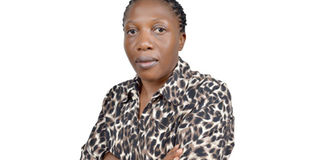Prime
Military intervention in Eastern DR Congo won’t solve conflict

Ruth Namatovu
What you need to know:
It is unclear how such a [regional] force will be put together...
In April this year, the African Union Commission (AU) backed the East African Community (EAC) proposal to establish a military force from the region, with Commission chairperson Moussa Faki Mahamat praising the EAC’s leaders “for their joint efforts in finding a durable solution to the crisis in eastern Democratic Republic of Congo (DRC) and the Great Lakes region as a whole.”
UN Secretary-General Antonio Guterres, for his part, hailed Uhuru Kenyatta’s efforts to promote peace in DR Congo, stating in a tweet that the world body “completely supports” EAC members’ commitment to restore stability to Congo and its neighbours.
In a second statement, Guterres stressed the importance of collaboration between the planned regional force and the United Nations’ Organisation Stabilisation Mission in DR Congo (MONUSCO), while also encouraging local armed groups to join in the democratic process.
A legacy of two regional wars fought around 25 years ago, as well as decades of greater political instability in the country, DR Congo’s East has been plagued by rebel bloodshed for many years as many armed factions seek control of its mineral-rich territories.
Even as Congo’s treaty of admission to the EAC was being signed, battles between government troops and the M23 rebel group shook the eastern province of North Kivu, shattering a shaky cease-fire that had kept the rebel organisation under wraps for nearly a decade.
Recently, the Uganda People’s Defense Forces (UPDF) and the Armed Forces of the Republic of the Congo (FARDC) commenced joint operations against the Allied Democratic Forces (ADF) in the DRC’s Beni territory in November 2021. While the move is welcome by both governments, MONUSCO has significant legal, operational, and reputational challenges as a result of UPDF-FARDC missions (MONUSCO).
It’s probable that the coordinated assault will result in fewer ADF operations and thus less bloodshed against civilians. However, there is a substantial possibility that the UPDF-FARDC operation would increase civilian risks, either as a result of ADF reprisals against community members or as a result of the offensive itself. Thousands of deaths have been attributed to the ADF in eastern DRC, as well as a series of bomb assaults on Uganda’s capital, Kampala in 2021.
Despite the positive response to the plan for a regional security force, it is unclear how such a force will be put together, and EAC authorities have provided few, if any, specifics on when it will be ready to deploy.
On the one hand, the EAC’s apparent proactive effort toward alleviating DR Congo’s instability is admirable in that it aligns with the continent’s credo of “African solutions to African problems.” It also appears to be yet another serious move toward bilateral and regional cooperation among African Great Lakes countries, a trend that has accelerated in recent years.
On the other hand, this EAC force would be yet another security actor in an already crowded field, and it is unclear what it would do differently from the others.
In 2013, as an auxiliary to MONUSCO, the Force Intervention Brigade (FIB), staffed solely by Southern African Development Community (SADC) forces, proceeded into the eastern DRC to ‘neutralize’ several of the 100-armed groups. After defeating the M23, it appeared to stall.
The United Nations peacekeeping campaign to restore peace in the region has cost billions of dollars and lasted over two decades with no ultimate peace in sight. Kinshasa imposed a “state of siege” in eastern DR Congo a year ago, presumably to give its security forces more leeway in stabilizing the province. That intervention, like the UN peacekeeping mission, has had mixed results.
Ms Ruth Esther Namatovu is a Doctor of International Affairs student, Johns Hopkins University, Washington DC.




